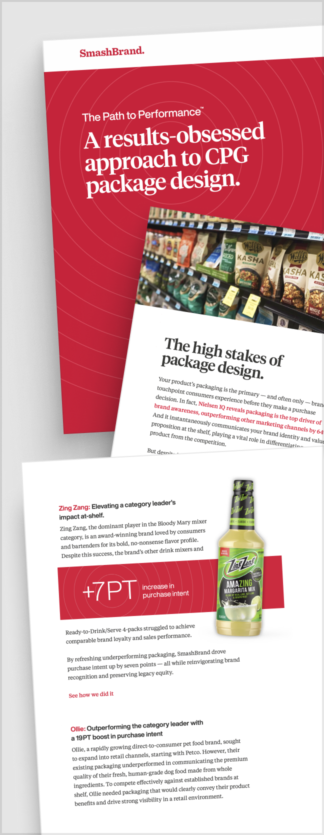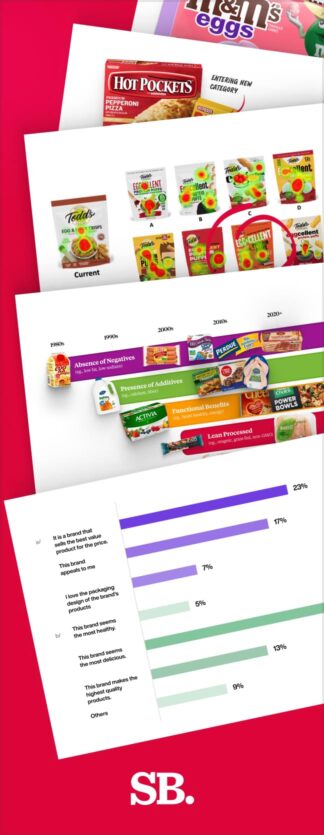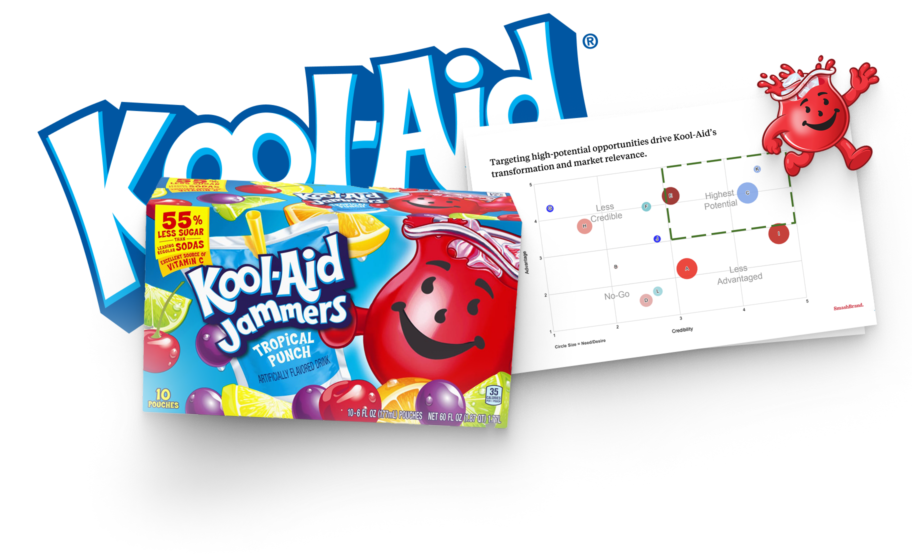Rebranding can be a powerful tool for businesses looking to revitalize their image, attract new customers, and build more robust brand recognition in a rapidly changing market. Yet, there are risks associated with rebranding efforts.
A poorly executed rebrand strategy can backfire, leading to confusion, customer alienation, and financial losses. Analyzing one’s mistakes can lead to learning from live examples in the market. This article will explore some of the most notable recent rebranding failures.
We will also examine the challenges and potential pitfalls associated with rebranding. Whether you’re considering starting the rebranding process for your business or are simply interested in the fascinating world of branding and marketing, this article will surely provide valuable insights and lessons learned.
Understanding The Rebranding Process
To better understand all the risks associated with a rebranding campaign, it is essential to understand the whole process first. It changes a company’s main brand elements, including rebranding the logo design, slogan, and image.
Companies rebrand for various reasons, such as staying relevant in a changing market, shedding negative associations or outdated perceptions, expanding into new markets or product lines, or merging with or acquiring another company. Companies may develop a whole new brand image to match the needs of the changing market.
The process typically consists of multiple stages. It starts with detailed market research to learn about the company’s brand image. Furthermore, market research allows businesses to understand their brand positioning. The next step is the development and implementation of a new brand strategy.
A successful rebrand strategy relies heavily on testing and refining the new brand elements and conveying the new brand identity across all touchpoints. The new branding elements must resonate with the target audience and match the market needs.
What Causes Rebranding Failures?
A failed rebrand can confuse consumers, weaken brand identity, and even drive away loyal customers. Even major brands, like Capital One, have faced backlash for missteps in their rebranding efforts.
One of the most common mistakes is an ineffective logo redesign that alienates existing customers rather than refreshing the brand. A rebranding disaster often stems from ignoring consumer sentiment, failing to communicate changes effectively, or straying too far from brand recognition.
The worst rebranding disasters occur when companies rebrand without a clear strategy, resulting in lost trust and declining sales. To avoid this, businesses must strengthen their rebrand rather than dilute their market presence.
Lack of Market Awareness
A rebrand that fails to align with market expectations can quickly backfire, making even established brands seem out of touch. One major rebranding mistake is ignoring consumer sentiment, leading to rebrand failures that weaken brand identity and recognition.
For example, Sierra Mist underwent multiple rebrands before being discontinued, proving that a bad rebrand can confuse consumers and hurt sales. Whether it’s a new packaging rollout or an iconic logo update, brands must conduct thorough market research to ensure that changes resonate.
For small businesses, misjudging the market can be even riskier. Learning from past failures through related posts and industry insights can help brands avoid costly rebranding missteps.
Not Researching Your Audience
A successful rebrand must align with the expectations and preferences of its target audience. Without thorough research, companies risk launching a rebrand that failed, alienating customers and damaging brand loyalty.
Some of the most notable rebrand failures stem from ignoring consumer sentiment. Failed rebranding examples like Tropicana’s packaging overhaul or Gap’s logo change prove that disregarding audience insights can lead to costly mistakes. These bad rebranding examples resulted in confusion, backlash, and declining sales.
To avoid failed rebranding, businesses must invest in consumer research. Learning from unsuccessful rebranding examples ensures that a company’s transformation resonates rather than repels. When brands skip this step, rebrand fails become inevitable. It may also increase the cost of rebranding.
Rebranding for the Wrong Reasons
A successful rebrand requires a strategic vision, not just a desire to stay trendy or mimic competitors. When businesses undergo rebranding without a clear purpose, they risk rebranding mistakes that confuse consumers and weaken brand identity.
Many companies rebranded and failed because they prioritized aesthetics over strategy. Rebranding gone wrong often results in unnecessary changes that alienate loyal customers rather than attract new ones. The disadvantages of rebranding include lost recognition, reduced trust, and wasted resources if the execution lacks direction.
To avoid a bad rebranding, businesses must ensure their efforts are driven by meaningful improvements, not fleeting trends or reactive decisions.
Removing Valuable Brand Elements
Over time, customers build relationships with specific elements of a brand. Eliminating the parts of your brand that make you compelling could mean you lose touch with your customers. A rebrand that removes valuable brand elements can lead to confusion and alienation among your existing customers.
Companies must take a thoughtful and strategic approach to rebranding to avoid these common mistakes. A successful rebrand requires careful planning, research, and execution. Companies should consider their market, audience, and brand elements when considering rebrand failures.
Read More: The Ultimate Rebranding Checklist.
Top Rebranding Failures
Now that you have learned how the rebranding process works, you might have learned how a single branding effort can sometimes become a nightmare. Let’s examine recent rebranding failures to understand what went wrong.
Twitter Turning to X
In 2023, Elon Musk purchased Twitter and started making significant changes to the platform almost instantly. These updates resulted in negative responses from users, and the rebranding effort was considered a failure.
Twitter’s original identity was long considered an incredible lesson in branding. The name, logo, and color all contributed to the brand’s personality and value proposition. The bird icon was friendly and welcoming, while the name made us think of short conversations and communication, the platform’s core components.
However, recently, Musk rebranded the website by changing the bird logo and name to “X,” which seemed to make no sense to experts and consumers. The new name doesn’t say anything about the platform, and it seems to be trying too hard to be “modern” and edgy. But one thing is sure: the new brand strategy didn’t re-engage or enthuse the audience.
Lessons learned from this rebranding failure:
- Rebranding efforts must not be solely about being “modern. ” They should also be meaningful and resonate with the target audience.
- Research and data must support rebranding efforts to ensure success.
Facebook Turning to Metaverse
In 2021, Facebook attempted to rebrand itself as Meta to reflect its ambitions of becoming a metaverse company. The new name represents the company’s broader vision and plans beyond its social media platform.
But things didn’t go as planned. Many people mentioned the challenges with pronunciation and readability, and some even felt that the new name was too vague and failed to capture the essence of the company’s core offerings.
The company’s attempt to pivot to a metaverse-focused company failed to win over investors, with many questioning the viability and profitability of the metaverse concept.
Lessons learned from this rebranding failure:
- The strategy for successful rebranding must align with the brand’s values and vision.
- Rebranding efforts must fully integrate into the product and user experience, not just a surface-level change such as a new logo or typeface.
Read More: 24 Critical Rebranding Questions To Ask.
Petco’s Rebranding Misstep
In 2020, Petco, a well-known pet supply retailer, decided to undergo a significant rebranding transformation. They shifted from their long-standing identity as “Petco Animal Supplies” to “Petco, The Health + Wellness Co.” While rebranding can breathe new life into a business, this particular makeover left many customers scratching their heads.
One of the most striking changes was the removal of Petco’s beloved mascots, Ruff and Mews, from their logo. These iconic figures had become synonymous with the brand over the years, and their absence left a void that loyal customers noticed immediately.
The new design disheartened customers accustomed to the old Petco logo, with its illustrated mascots and vibrant color palette. Some described it as “cold and lifeless,” a far cry from the friendly and inviting image the brand had cultivated.
The rebranding decision sparked a backlash among Petco’s customer base. Consumers launched online petitions, urging the company to revert to the old logo. It became clear that the logo held significant sentimental value for many customers, emphasizing the importance of understanding your audience’s emotional attachment to your brand.
Lessons learned from this rebranding failure:
- A brand’s logo is more than just a symbol; it represents the company’s personality and identity. When rebranding, ensure your new logo aligns with your brand’s established personality and values.
- Before making significant changes to your brand’s identity, gauge customer sentiment and understand your audience’s emotional connection with your logo.
- Even if you’re expanding or evolving your brand, maintain consistency in your identity.
GAP Rebranding Failure
In 2010, GAP boldly moved to revamp its corporate identity with a new logo. Unfortunately, the rebranding attempt turned into a cautionary tale for businesses worldwide. The $100 million logo fiasco is a stark reminder of how not to approach a rebranding campaign.
The first mistake that the company made was that it rushed into rebranding without a comprehensive strategy or proper groundwork. The lack of planning and preparation led to a design that missed the mark. Consumer preferences and expectations were never adequately considered.
The new logo bore a scant resemblance to the familiar emblem customers had come to love, leaving them bewildered and alienated. GAP’s failure to explain the reasons for the change left customers confused and frustrated. The company did not articulate why the change was necessary, what vision they were pursuing, or the essence behind the rebranding.
Beyond the logo, there was no meaningful change in stores or product offerings. The lack of innovation or fresh product lines left customers feeling short-changed. Overall, the critical errors marred the execution of the rebranding. The choice of the Helvetica font for the new logo was already considered passé by design specialists, and customers did not receive the design itself.
Lessons learned from this rebranding failure:
- Communication is vital in explaining the reasons behind the change and ensuring customer buy-in.
- Follow-up actions, such as product innovation or store redesigns, are critical to rebranding.
Radio Shack as “The Shack”
In 2009, Radio Shack attempted to rebrand itself as “The Shack” to modernize its image and appeal to younger consumers. The rebranding effort faced adverse reactions from consumers and tech reviewers, who saw the new name as unnecessary and confusing.
Many customers were attached to the Radio Shack brand and saw the new name as a departure from the company’s core values and offerings. Instead of a successful rebranding, it alienated core DIY electronics enthusiasts, who saw the new name as a shift away from the company’s focus on electronic components and towards more mainstream consumer electronics.
Suddenly, the company lost its visual identity and brand reputation, resulting in a drop in financial performance. Radio Shack filed for bankruptcy in 2015, and many analysts point to the lousy redesign as a contributing factor.
Lessons learned from this rebranding failure:
- Choosing a new brand name that resonates with the target audience is crucial for a successful rebranding effort.
- Being mindful of the potential consequences of alienating profitable niches is vital in maintaining brand loyalty and financial stability.

Path to Performance™
Taking a results-obsessed approach to CPG package design.
Learn how SmashBrand’s proprietary process – rooted in scientific principles, informed by data, and validated by your target audience – takes the guesswork out of package design and delivers guaranteed results.
"*" indicates required fields
Tropicana’s Rebranding
Tropicana is another rebrand example that nears the top of the list for being the worst rebrand. When the company attempted to rebrand its product packaging design and abandon its signature old logo. Although the company aimed to get a modern and minimalistic look, it turned into bad branding.
The packaging redesign removed the iconic orange with a straw and replaced it with a glass of orange juice, which changed the customer’s perception. The new design also removed the “Pure Premium” label, an essential part of the brand’s value proposition.
It triggered adverse reactions from customers who found the new graphic design confusing and unappealing. Due to this, sales declined by 20% within two months of the redesign.
Lessons learned from this rebranding failure:
- It cannot be overstated how important it is to maintain a signature look and brand equity. Consumers often have strong emotional connections to brand elements, such as the original logo and packaging, and changing them can lead to confusion.
- Keeping elements that work for the brand, such as the “Pure Premium” label, is essential in maintaining brand value and customer loyalty.
Standard Life Aberdeen
Standard Life Aberdeen attempted to modernize its image by rebranding, dropping the vowels from its name, and adopting a new logo and visual identity. The new name, Abrdn, was meant to reflect a more “modern, agile, digitally enabled brand.”
The rebranding campaign was criticized and confused. Many critics pointed out the challenges with pronunciation and readability, while others felt that the new name looked like a typo. The company’s attempt to modernize its brand image ultimately fell flat, and the new branding failed to resonate with its target audience.
Despite the name’s criticisms, some experts have praised the rebranding effort’s execution. The company produced a proper rebranding announcement, communicated it consistently, and marketed it more widely than it had before.
Lessons learned from this rebranding failure:
- Rebranding strategies must be carefully considered and aligned with the company’s values and vision.
- Companies must select brand elements such as names and logos that are easy to pronounce and remember, keeping in mind the target audience.
- Proper communication and marketing of the rebrand are crucial in gaining acceptance and buy-in from customers and stakeholders.

Nice Package
Don’t miss out on our monthly newsletter Nice Package!
Each month, we deliver a data-driven newsletter directly to your inbox, unpacking a critical topic in the FMCG & CPG industry.
"*" indicates required fields
Data-Driven Brand Development That Can Guarantee Sales Performance.
If you need a rebrand with performance predictability, we can help. SmashBrand is a rebranding agency that researches, designs, and tests all products to ensure peak shelf performance. Book a time to discuss your project with our team.
Subscribe to
Nice Package.
A monthly newsletter that unpacks a critical topic in the FMCG & CPG industry.
Free Resource.

CPG product repositioning guide.
Explore the five undeniable signs your CPG product needs repositioning along with strategies for leveraging consumer insights for a guaranteed market lift.
Learn More About CPG product repositioning guide.


